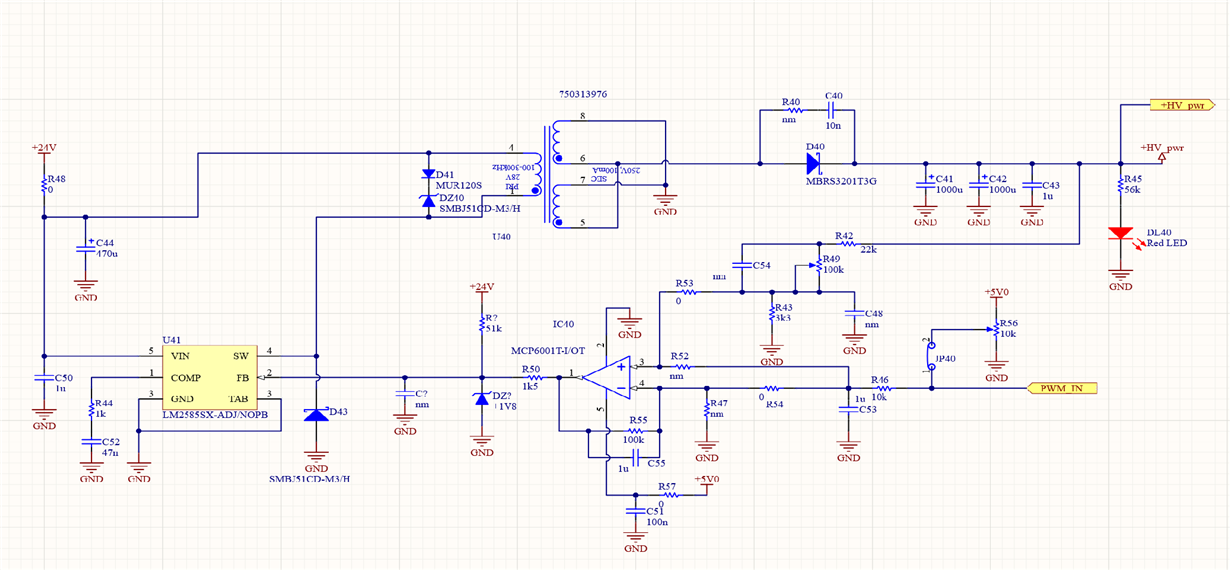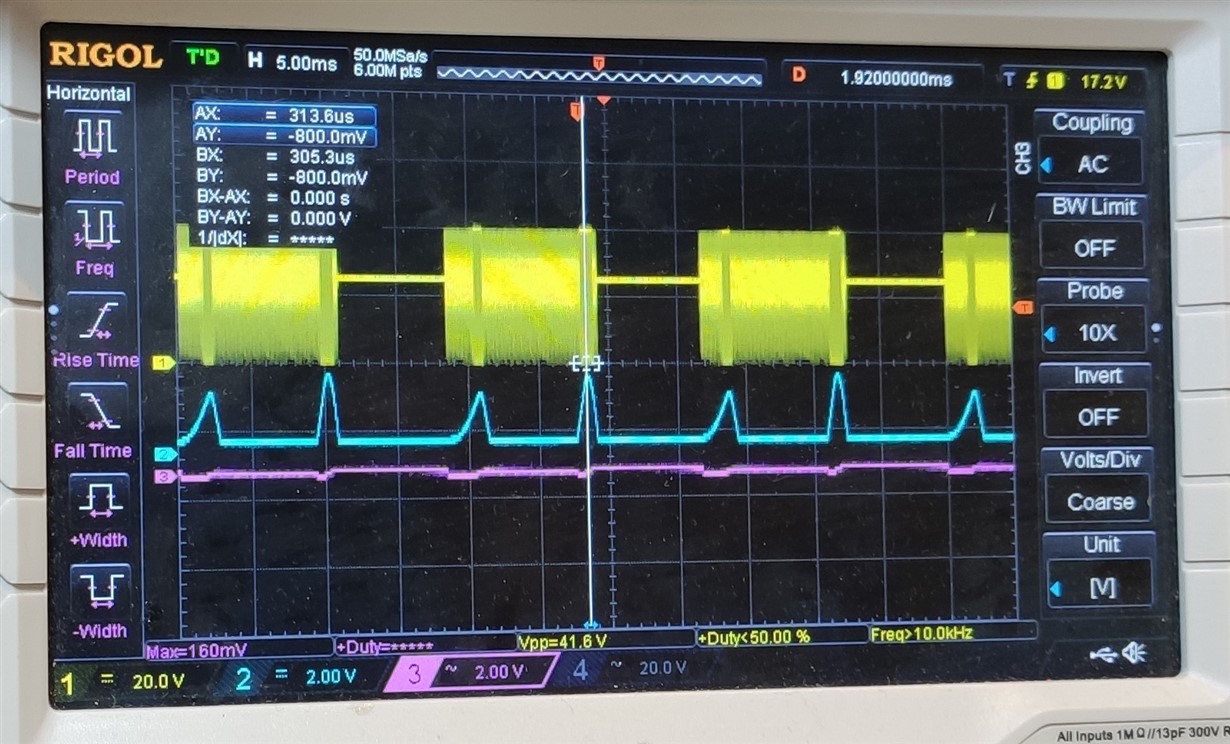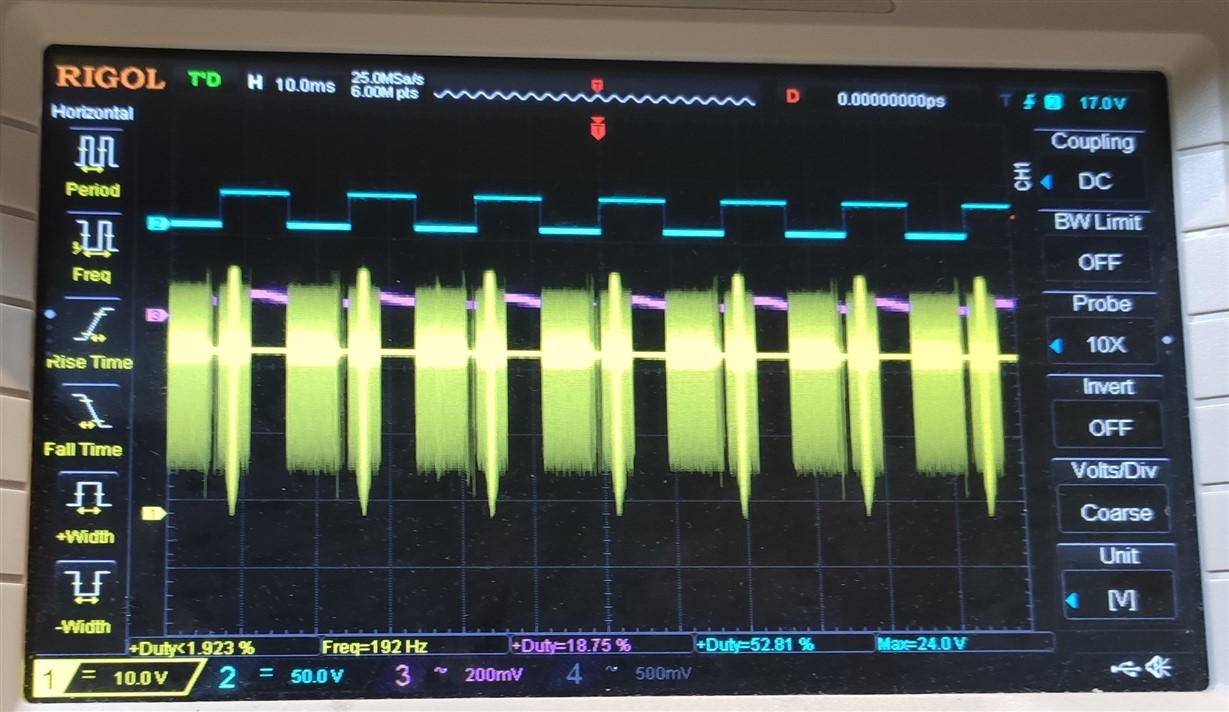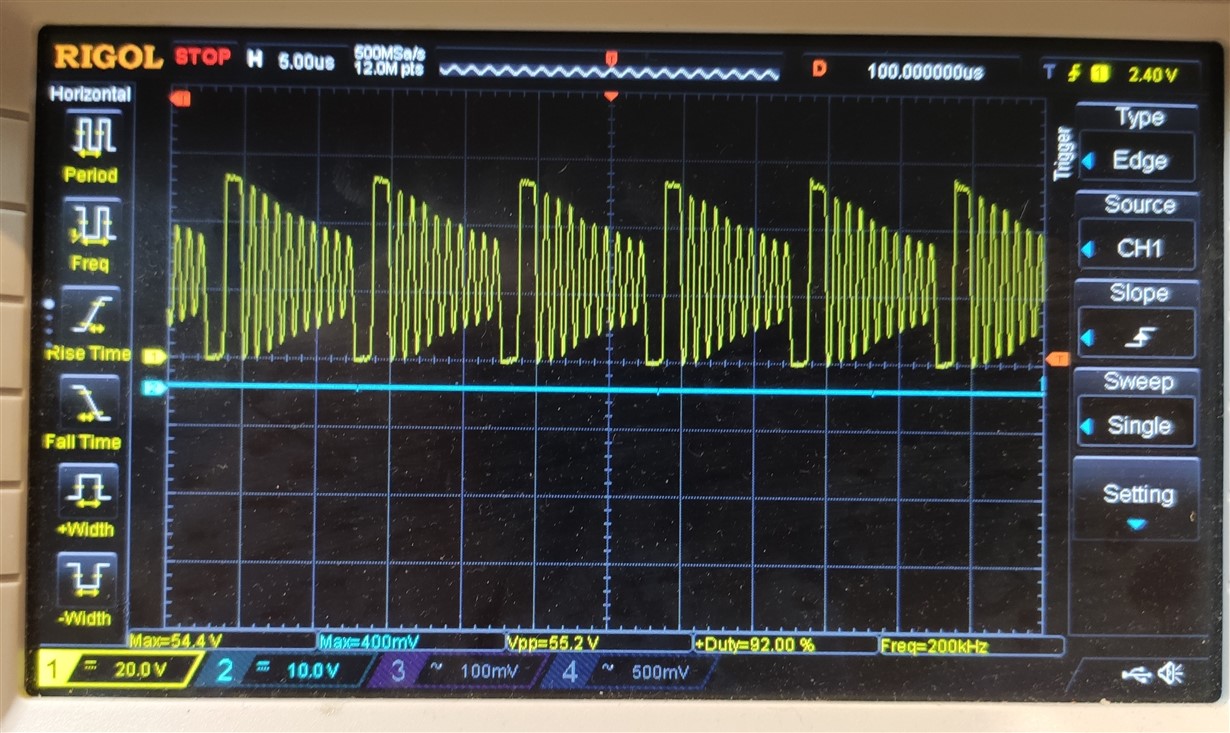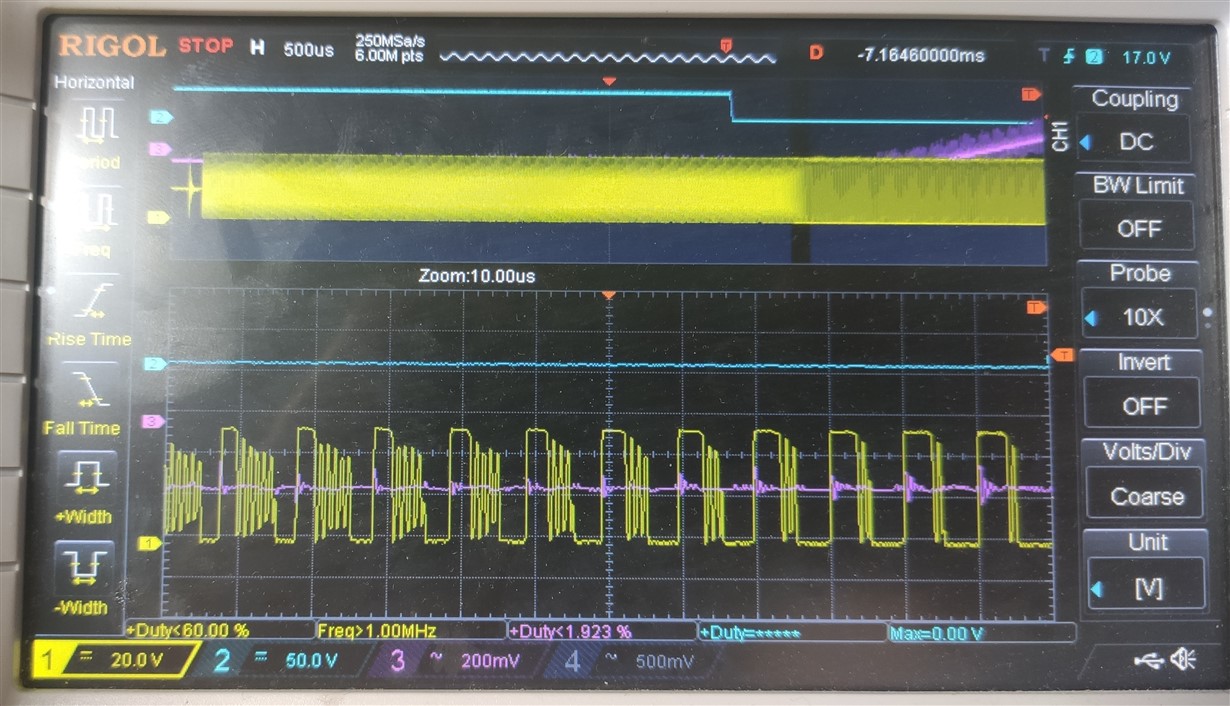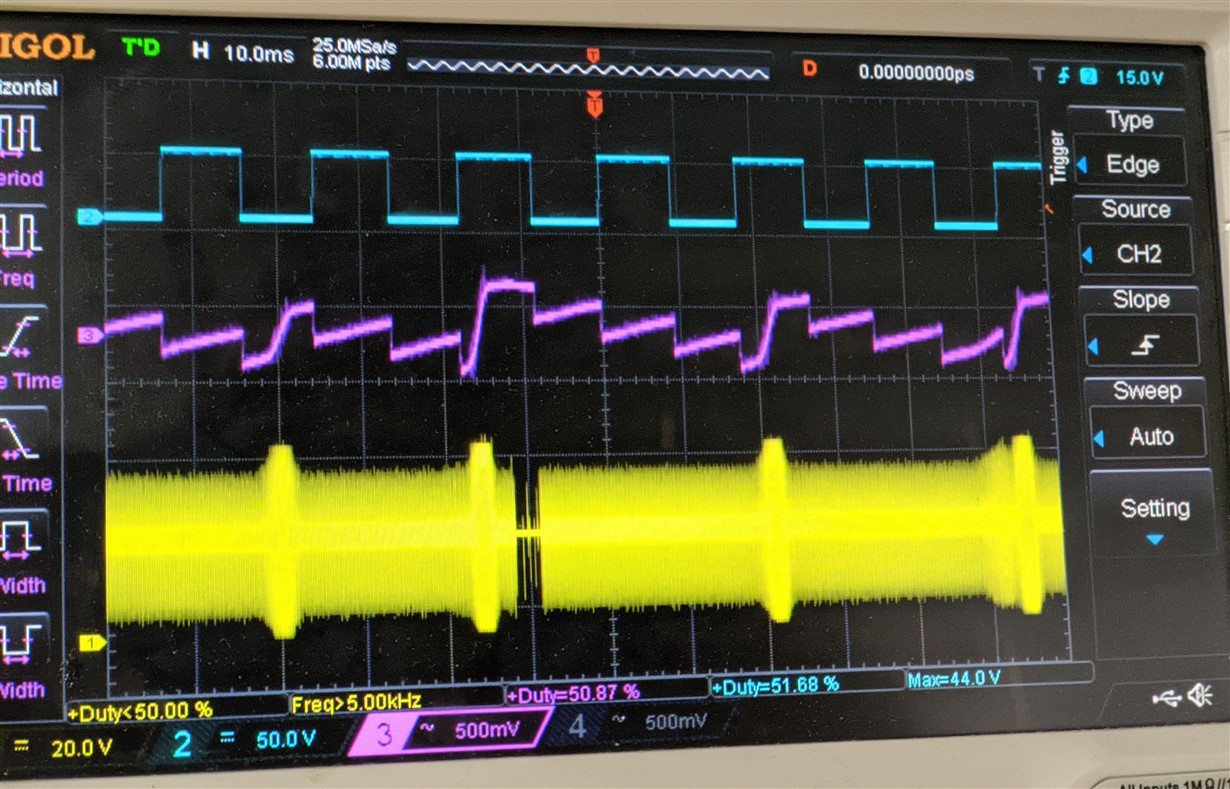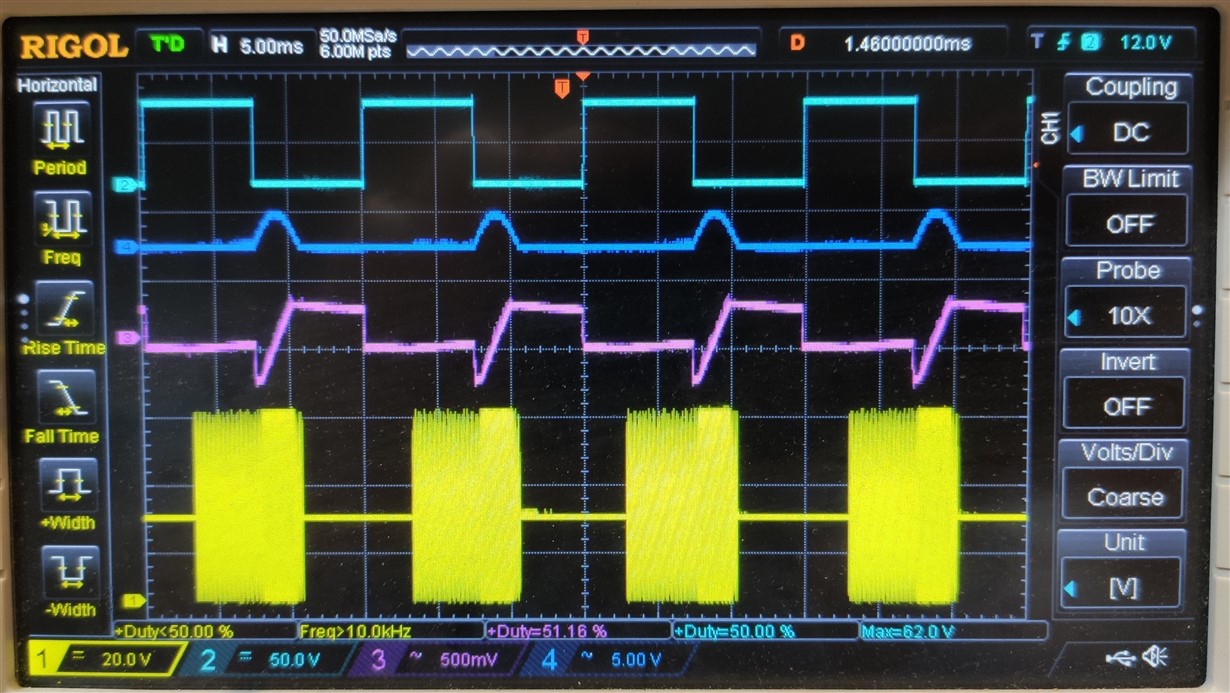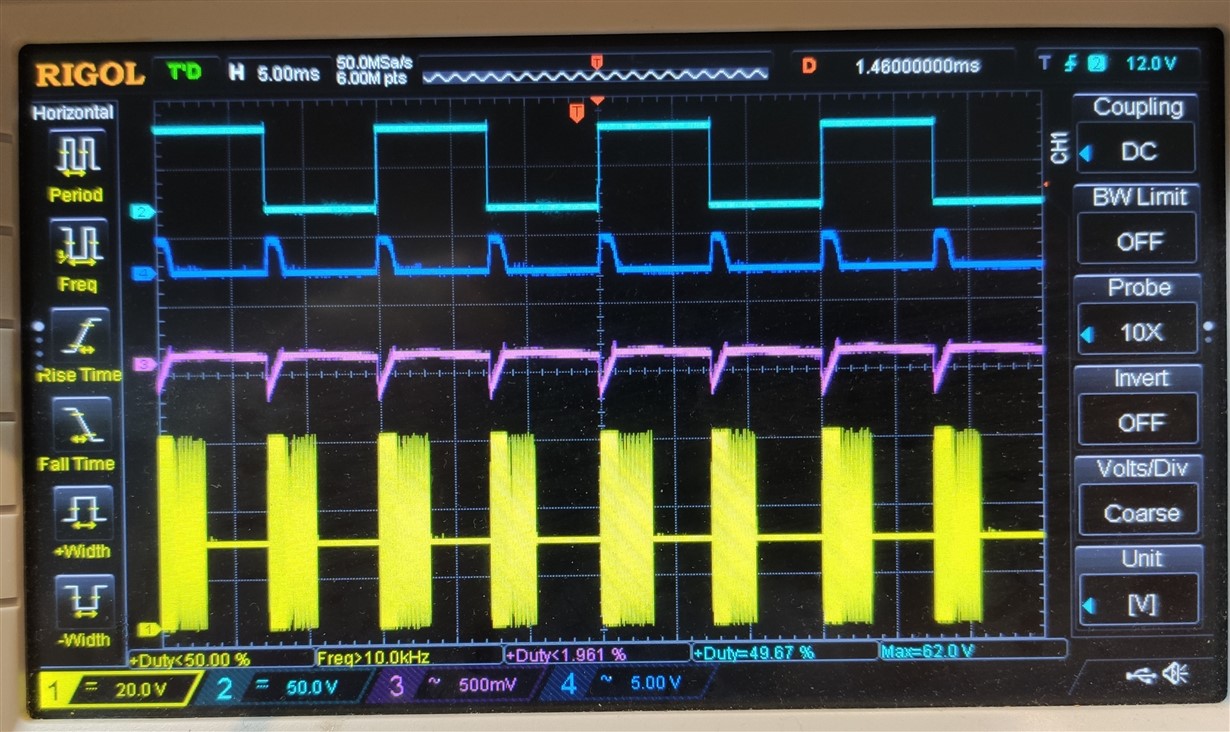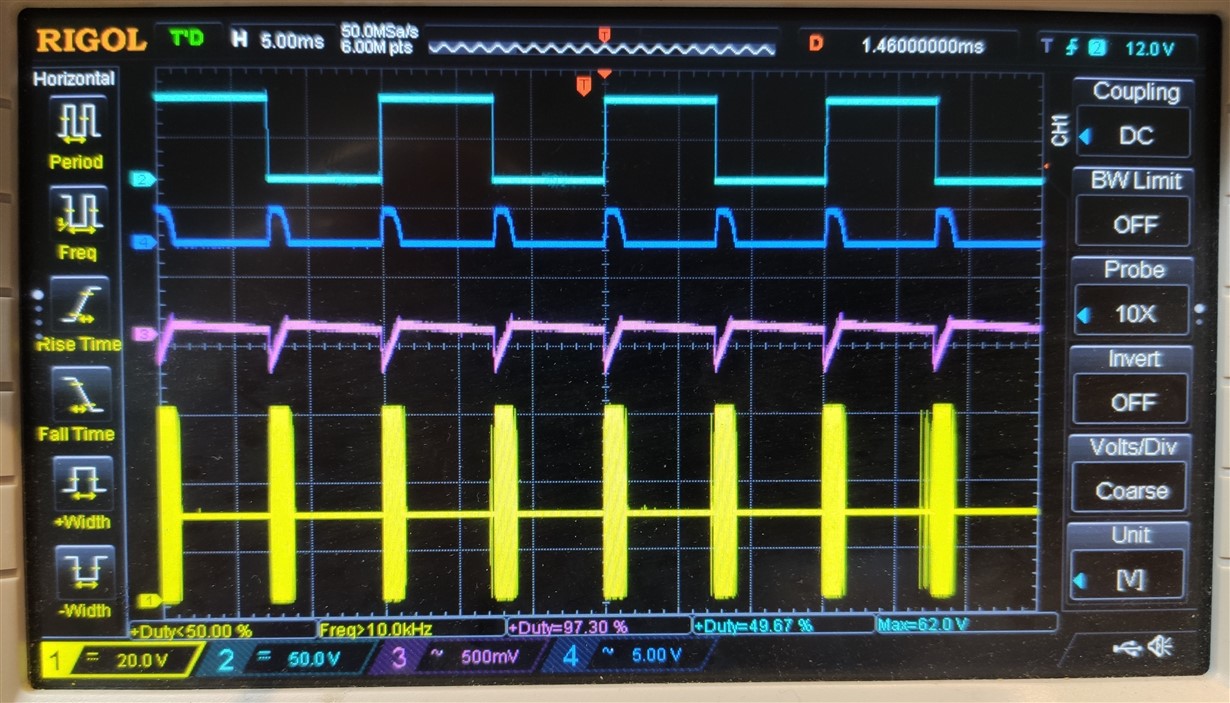Hello everyone,
I am attaching the schematic diagram of the circuit it is giving me headaches:
Essentially it is a flyback converter which takes the +24V at the input and raises it, with the aid of a 750313976 tranformer by Wurth Electronics, from 0 to +60V depending on the PWM IN duty cycle. The output is substantially a capacitor of a few uF which is switched on and off at around 50 to 100 Hz (not shown in the schematic). What surprises me is the waveform at the "switch" pin: in all cases it is discontinuous (which might not be a problem per se), but it is the fact that "wanders" which puzzles me (you can see it in the following video):
The result of this, is that the power read at the PSU is unstable, as you can see in the following video (first line PSU voltage, second line current, third line power):
I am also attaching a few extra pictures:
Picture "2"; yellow = SWITCH pin, blue = COMP pin, purple = output voltage AC coupled (to see output ripple)
Picture "5": yellow =SWITCH pin, blue = 60V output; ; purple = output voltage AC coupled (to see ripple);
Picture "6": yellow =SWITCH pin, blue = 25V output purple = output voltage AC coupled (to see ripple);
Picture "ringing": at the SWITCH pin, this is what appears most of the time.
If I zoom in at the SWITCH pin there where the COMP pin is higher (see pic 2), it so happens what is detailed in the "ringing zoomed" picture: the positive pulse appears to widen a little and the ringing tends to disappear:
Am I doing anything wrong? Except for these strange pictures and the power readings (well, and a little whining from the transformer from time to time), the system appears to be working well, however I would like to know if I am mistretaing the LM2585 to that reliability or EMC emissions are out of spec.
Thanks,
Paolo.


